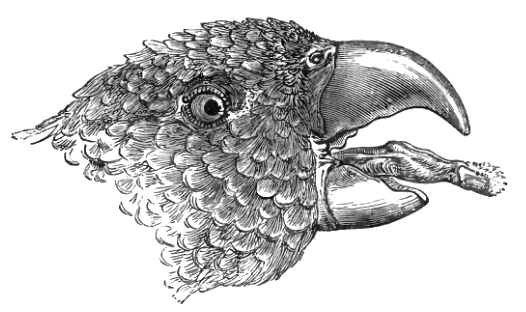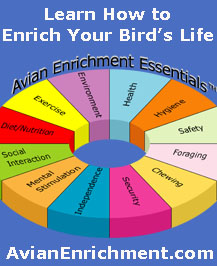Lories & Lorikeets
|
Beautiful and brilliant colors characterize the birds in this species. They come in all sizes, shapes and colors. Lories also have wonderful, playful, friendly very active, and outgoing personalities. The only difference between Lories and Lorikeets is that Lories have shorter, squared tails while Lorikeets have longer, pointed tails. There are approximately 55 different species of these birds, but only about a dozen are commonly kept as pets. The Rainbow Lorikeet is characterized as the most popular. Lories eat a very different diet than other parrots. Primarily nectar, fresh fruits and specially formulated lory pellets. Nectar mixes, usually powders that you mix with water, are available at specialty pet stores and on the Internet. Due to their specialized dietary needs lories and lorikeets are not recommended for the first time bird owner. Due to the nature of their diet, lory droppings are very loose and frequent. The cleaning requirements are a bit more intensive as these birds often squirt their droppings through the bars of their cages. |
|
|
|
|
|
Lories and Lorikeets travel great distances looking for flowers and fruits, their main foods. These birds generally forage in flocks that can range from just a few to a few dozen individuals, depending on the species and habitat conditions.They will establish daily flight paths connecting their feeding sites, which tend to follow the natural contours of the landscape, such as hills, valleys, and rivers. At night, lories retreat along these paths back to their communal roosts, which can contain as many as several thousand birds. The Lories' diet in the wild consists mainly of nectar, flowers, pollen, insects, fruit and seeds. They have flat tongues with long bristles on the end that makes them look like brushes. This specialized tongue allows lories to get the most nectar as possible when they stick their long tongues into flowers.
|
Listen to Lorikeets in the wild:
Trichoglssus haematodus
© 2015 Cornell University
Watch an informative video about Rainbow Lorikeets:
Watch lorikeets wrestling:
|
|
|
|
|||||||||||||||||||||||||||||||||||||||
|
To see more pictures and obtain information about a variety of lorikeet species click on the links below:
* Life span, size and weight vary by species.
|
(source: bird-stamps.org)
|
Related Articles
 Parrots of Continental Asia
Parrots of Continental Asia
 Australian Parrots
Australian Parrots
 Indonesian Parrots
Indonesian Parrots







































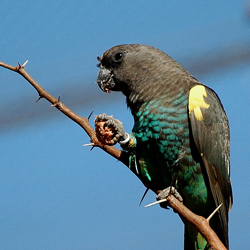




























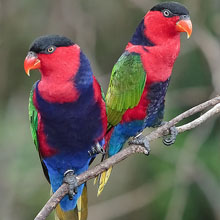
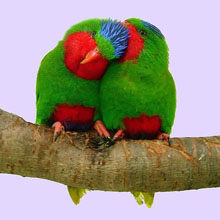


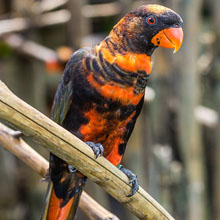


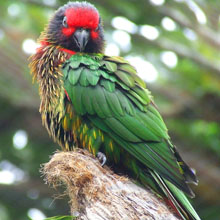
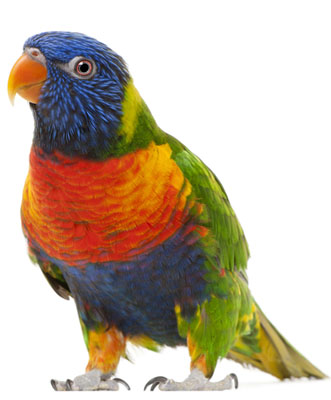

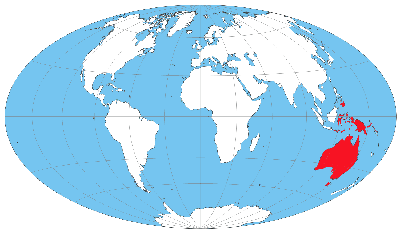 Lories and lorikeets are found in southeast Asia, Indonesia, Polynesia, New Guinea, and Australia. Most species are from tropical forests, including lowland rainforests and cloud forests.
Lories and lorikeets are found in southeast Asia, Indonesia, Polynesia, New Guinea, and Australia. Most species are from tropical forests, including lowland rainforests and cloud forests.